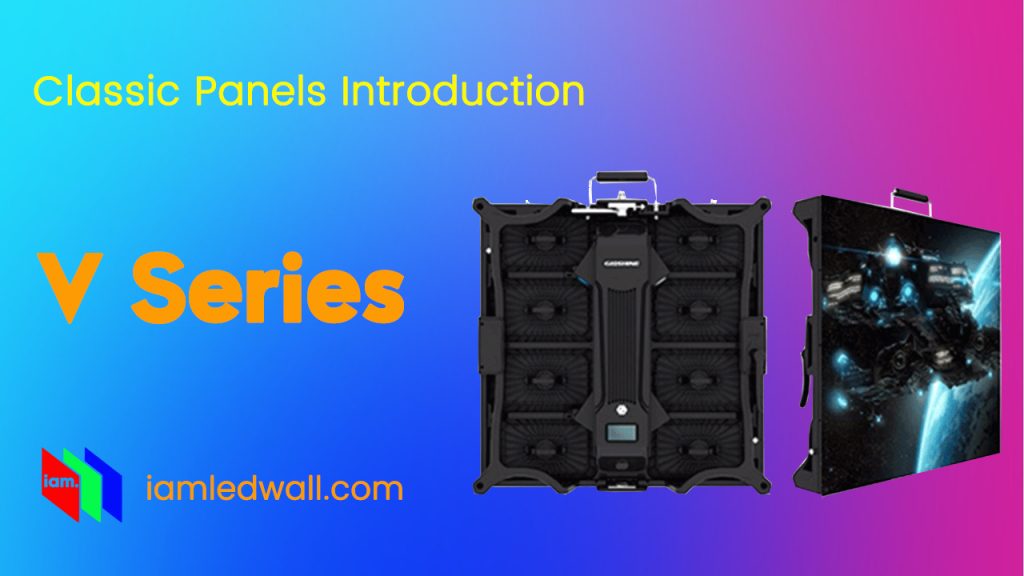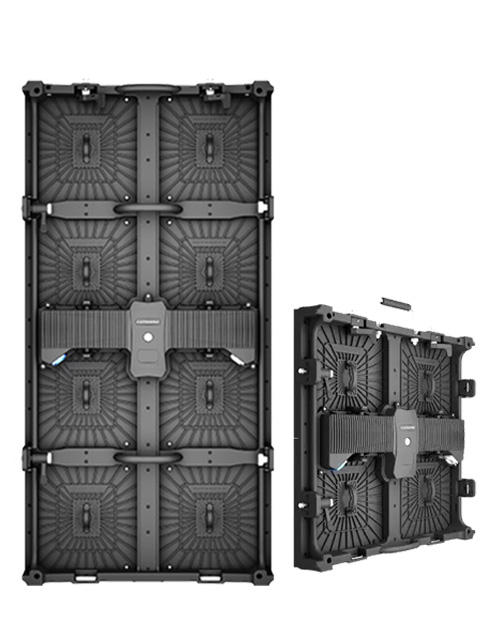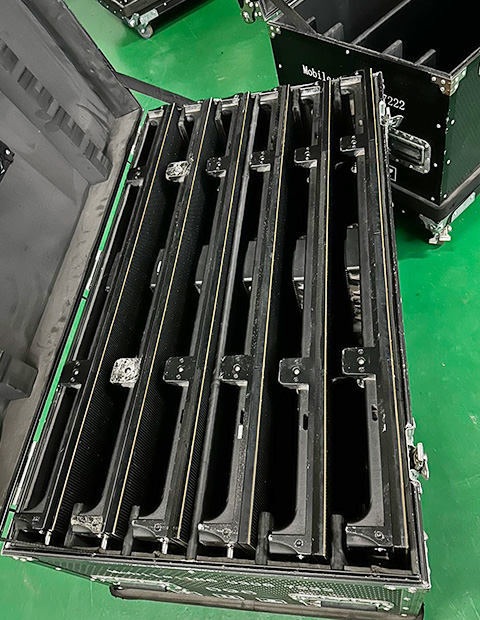Most of the shapes of LED screens are rectangular, but some buildings are not built in rectangles or planes. Generally speaking, some designers design some walls into arcs or circles in order to make the building look more beautiful. So, how do LED display manufacturers install curved LED displays in such curved or circular buildings? Is there a limit to the minimum radius of curved LED screens? How to calculate it? In this blog, we will provide you with a comprehensive guide on how to calculate these essential parameters.
Measuring Arc Length, Chord Length, and Chord Height
Curved LED screens often have challenging dimensions, making it difficult to measure the arc length directly. To overcome this, we can calculate the arc length and radius based on the chord length and chord height and then verify the measurements.
Measuring Chord Length and Chord Height
To measure chord length and chord height, you need to understand the basic concepts. The chord length is the straight-line distance between the two endpoints of the curve, and the chord height is the perpendicular distance from the midpoint of the chord to the midpoint of the curve. Here’s how you can measure them:
Calculating Arc Length and Radius Based on Chord Length and Chord Height
Now, let’s dive into the calculations. The idea is to use these measurements to determine the angle formed by the chord length and chord height, and from there, calculate the arc length and radius. Here’s the step-by-step process:
a. Suppose the chord height is ‘b’ and the chord length is ‘2a’. For example, let’s say you measure 2a as 200 and b as 60.
b. Using the Pythagorean theorem, calculate ‘c’ (the hypotenuse of the right triangle formed by chord length and chord height): a^2 + b^2 = c^2. In this case, c is approximately 116.62.
c. Next, calculate the sine of angle A using the formula sin(A) = a/c. Using a calculator, sin(A) is approximately 0.86, which means angle A is about 59.32 degrees.
d. Extend side ‘b’ to the center of the circle, creating an isosceles triangle. The sum of angles in a triangle is 180 degrees, so angle C is 62 degrees.
e. Use the formula sin(C) = c/hypotenuse to find the hypotenuse’s length. In this case, sin(62 degrees) is approximately 0.883, and the hypotenuse is about 113.3.
f. The circumference of the circle that the arc belongs to is given by Circumference = 2πR = 2 * 3.14 * 113.3 ≈ 711.52. To find the length of the arc, divide the circumference by 360 (the total degrees in a circle) and multiply by the angle of the arc. In this example, the arc length is approximately 245.52 units.
g. In conclusion, the calculated values are as follows:
– Arc Length: 245.52 units
– Arc Angle: 124 degrees
– Radius: 113.3 units

Comparing Calculated Arc Length with Actual Measurements
After performing the calculations, it’s important to compare the calculated arc length with the actual measured arc length. Ideally, the difference should be within 250 pixels. If there is a significant discrepancy, it’s advisable to repeat the measurement and calculation process.
FAQs:
Is there a limit to the minimum radius of the large curved LED screen? How to calculate
Generally speaking, if the curvature of the wall is relatively large, regular rectangular modules can be used for splicing. If horizontal splicing is possible, choose horizontal splicing. If not, stand the modules upright for splicing. New or Used LED display supplier technicians should pay attention to the splicing gaps when splicing.
If the area is small, they can use magnetic front maintenance LED modules for assembly. This kind of front maintenance splicing can save maintenance channels, and maintenance is convenient and fast. You can remove or replace the LED Modules, control cards, power supplies, etc. from the front. If the area is large, you can choose to use cabinet for splicing.
If the curvature of the wall is small, you need to customize the LED module and design the bottom shell of the module kit with a draft angle, as shown in the figure below.
This kind of LED module can splice a curved LED screen with a smaller arc to a greater extent during splicing, and the splicing gap is smaller. So how to calculate the minimum radius and module number of the curved LED screen based on the wall radian provided by the customer?
As shown in the figure above, if the size of the LED module and the draft angle are known, and the modules are bent and cut at the maximum angle, then the radius of the arc formed by the final splicing of the LED modules can be calculated with the help of CAD.
The following are several common LED screen module sizes and bottom case extraction angles (1, 1.5, 2, 3 degrees) in the LED screen industry, as well as the minimum radius of the arc they can form.
| Module size | angle | minimum radius of the arc |
| 160*160mm | 1 | 4583.9mm |
| 192*192mm | 1 | 5500.67mm |
| 256*128mm | 1 | 7337.23mm |
| 320*160mm | 1 | — |
When a customer needs to make an arc LED screen, the LED display manufacturer should calculate the radius of the arc building based on the size of the module, the draft angle of the bottom shell and the minimum arc radius, and then compare it with the data in the table . If the arc radius is greater than the minimum radius, it can be seamlessly spliced into an arc LED screen or annular screen. If it is less than the radius, there will be a gap. The radius of the arc can be calculated by the following method.
As shown in the figure above, first measure the chord length b of the arc, then measure the vertical distance a (chord height) from the center point of the chord to the top of the arc, and then use the Pythagorean theorem to calculate, R2=(R-a)2 +(b/2)2, after conversion, the formula is:
R=a/2+b^2/8a
After calculating the radius R, compare it with the data in the table above. If the radius is greater than the minimum radius in the table, it is suitable for a curved or annular screen. If it is smaller, you need to customize a flexible LED module for assembly.
Conclusion
If you want to work curved LED screens well, you should first calculate parameters like arc length, chord length, and chord height, requires precision and careful measurements. By following the steps outlined in this guide, you can ensure that your curved LED screen installations are accurate and good method. Whether you’re a LED display manufacturer or an project installer, these calculations are important for a successful curved screen project.



